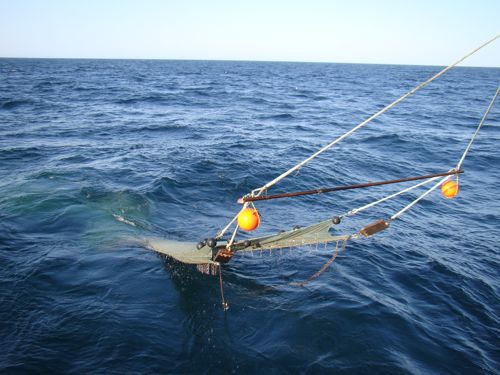Catherine (Kitty) Mecklenburg is a research associate with the Department of Ichthyology, California Academy of Sciences. She was on both previous RUSALCA cruises ('04 and '09) and has returned to continue her work on the identification and distribution of fishes that live on (benthic) or near the bottom (demersal). With her on this cruise is Arve Lynghammer, a Ph.D. student at the University of Tromsø, Norway. When the RUSALCA program started, few fishery or ichthyological research investigations had been carried out in this region of dramatic climate change and the composition of the fish fauna in the region was largely unknown. This was particularly true for the Russian waters of the study area. The RUSALCA mission has been to generate and disseminate essential information on the poorly studied fish fauna of the Pacific-Arctic region to a wide community of users, including the fish teams in the program focusing on other aspects such as life histories and ecology. The work will enable current and future monitoring of biodiversity and detection of change by providing basic knowledge on identification of species and accurate assessments of species distributions.
Kitty uses a bottom trawl net called an otter trawl to collect samples at several biological stations, and distinguishes among species using standard morphological methods supplemented by tissue sampling in the field for DNA analysis. This research has helped to solve longstanding problems in identification of Arctic species. Prior to this work, only highly technical, sometimes controversial, works were available to help identify the Pacific-Arctic fishes. Without clear descriptive material and assessments of current distribution, it will not be possible to monitor the resource. Kitty is currently working on an informational atlas and identification guide to the Pacific-Arctic fishes which will enable fish specialists as well as non-experts to more accurately identify fish obtained by future monitoring efforts. The RUSALCA cruise in 2004 provided records from the Chukchi Sea of several continental shelf species that had rarely been reported for the region. In 2009 the retreat of the sea ice allowed the ship to reach deeper waters of the continental slope north of 76°N, where Kitty's team discovered several species new or rare for the region.
A question that always arises is whether these discoveries reflect new movements of fishes into the region (from the Atlantic or the Pacific depending on the species involved), possibly in response to climate change, or are simply the result of sampling in previously under sampled areas. Whatever the case may be, the RUSALCA program has enabled a baseline to be established. Kitty hopes to reach additional previously unsampled sites on this cruise where she might make additional new discoveries. She'll be focusing on filling gaps in the current draft of the identification guide by continuing to photograph fresh and living specimens, to extract tissues for DNA barcoding, and to preserve and archive specimens for permanent museum collections to serve as documentation of the catch and provide specimens for taxonomic research.
Note: For more information about the new and rare species identified on previous RUSALCA cruises, check out more information about Kitty's work on the NOAA Ocean Explorer website, www.oceanexplorer.noaa.gov/explorations/12arctic/welcome/html
 Thanks to Natalia Chernova for this great beam trawl in the water.
Thanks to Natalia Chernova for this great beam trawl in the water.
